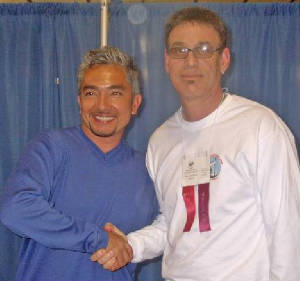How to Stop Your Dog from Licking His Paws
Dogs can lick their paws for a variety of reasons. If your dog is licking or chewing at his paws once in a while and only for a few seconds at a time, there is likely no need to worry. But if the behavior becomes frequent, it could indicate a problem.
A dog licking his paws could expose him to any germs or chemicals that he might have walked through earlier. It could also indicate a medical issue that may necessitate a vet visit or some other care on your part, so it is helpful to know the cause.
How to Create an Emergency Preparedness Plan for Your Dog
It is recommended that every family have an emergency preparedness plan in the event of a natural disaster or something that forces them to leave their home in a hurry. For the human members of your family, an emergency preparedness kit could include important documents, extra cash, non perishable foods, and an agreed upon meeting space.
If you have dogs in your home, your emergency preparedness plan should extend to them as well. This includes having all the items that you will need for your dog readily available, a plan for their safety, and some basic training where possible to help keep your pet as calm as possible in the event of an emergency.
Why Leadership is a Must in Dog Training
Dogs are pack animals. In the wild, they have a pack hierarchy with an alpha dog. This dog leads the pack and is responsible for ensuring the safety and discipline of the others. From only a few weeks old, wild wolves and dogs begin to understand who the leaders of their pack are from a young age.
The pet dog in your home will obviously have a different lifestyle from a dog in the wild, but the importance of the pack remains. By establishing yourself as a leader for your dog, you can help make the training process easier and build a stronger connection between you and your dog.
Can a Dog Be Too Old to Train?
There is a common saying that you cannot teach an old dog new tricks. Often, dog owners will take this to mean that once a dog reaches a certain age, it is no longer possible to train him. While it is beneficial for training to begin when a dog is a puppy since those are the most formative months, this saying is far from true.
Older dogs can still learn new behaviors so if you have adopted an older rescue or forgot to train your dog when he was younger, there is still hope that you can get a well behaved dog. You simply need to be aware of the differences and choose the right approach for training.
Why Do Dogs Lick?
There is a common belief that licking behavior in dogs is their way of showing affection and that the licks are kisses. This is true to some extent, but there can be more that goes into this behavior besides a desire to show affection.
Understanding why dogs lick can give you better insight into your dog, as well as be a good indicator of any health problems that could cause licking behaviors.
Getting Your Dog Ready for Holiday Visitors
If your home will be hosting any guests this holiday season, whether for a single meal or a multi day visit, you want to be sure that you have prepared for your dog's comfort and good behavior in addition to preparing the rest of your home.
For some dogs, visitors can be an exciting prospect with more people around to give them attention. For other dogs, visitors can be a cause for concern and overstimulation. Knowing how your dog responds to visitors and taking steps ahead of time to prepare your home and pets will make sure that both your dog and your visitors have a good holiday season in your home.
Does Your Dog Recognize the Sound of Your Voice?
Many dog owners have experienced their dog wagging her tail when she hears their voice or looking around curiously when she hears you talking at the dog park. Some owners will video chat with the family or friends who are watching their dog so that they can speak with their dog as well, or they have a pet camera with built in speakers so that they can speak with their dog while away from home.
This may leave dog owners wondering if their dog is comforted by the sound of their voice in particular, or is excited just because they can hear a human voice at all.
Can Dogs Feel Embarrassed?
When your dog has done something silly, like falling off the couch or knocking over their water bowl, and seems to be walking around somewhat awkwardly afterward, many dog owners will say that their dog is embarrassed after his mistake. We know that dogs can feel a whole range of emotions - happiness, fear, anger, and excitement. But can they also feel embarrassment?
Scientists have contributed extensive research on dogs’ emotions and behaviors over the past several years, but there is still an extensive amount of work to be done before we truly understand how dogs think and feel. This is what we know so far and how to tell what your dog is feeling if you think he might be embarrassed.
How to Slow Down a Dog that Eats Too Fast
Many dogs’ lives seem to revolve around mealtimes and in their excitement, they will wolf down their kibble in seemingly a matter of seconds. But eating this quickly is often not good for dogs. It can put them at risk for choking and can cause indigestion, upset stomach, and bloat, which can be extremely dangerous.
Luckily, there are several ways to slow your dog down during dinner time and help establish healthier eating habits.
Keeping Your Dogs Secure in the Car
In the car, it is important to drive distraction free and keep all passengers secured with seat belts. This is equally important for the dogs in your car. Having a dog running around in the back or front seat while you are driving can be an extremely dangerous distraction. Even if your dog is well behaved, any sudden stop or crash could result in injury to your dog if they are not secured.
The best way to solve these problems is by securing your dog whenever you are in the car. Fortunately, there are several different methods available depending on your dog’s needs and comfort.
Options for Securing a Dog in the Car
Although there are several different ways to secure a dog, it is worth doing some research. Not all of the products on the market have been proven effective in keeping dogs safe during crash tests. But when used properly, these solutions can be effective at securing dogs in cars:
- Dog Seat Belts - Seat belts for dogs are a special harness that attaches to a car seat belt and then to your dog's harness. Your dog can sit on the seat so they can see out the window, but will not be able to move around the vehicle. The seat belt will also restrain the dog during a collision. This is good for dogs of any size, but not good for dogs who are liable to chew through their leash.
- Dog Crate - A crate is one of the most secure options for dogs and as it keeps the dog in place and you can secure the crate to hold it in place during a collision. Travel crates will work and there are also specially made car crates that can offer additional safety. This solution can work for any dog that is comfortable in a crate and any vehicle that has enough space.
- Back Seat Hammock - The back seat hammock fits over the headrests of your front seats and headrest of your back seats to create a sort of hammock. Dogs can rest on the backseat with less risk of sliding forward during sudden stops. It also makes it harder to get into the front seat. This solution is better for larger dogs and calmer dogs since it does not secure your car completely.
- Dog Guard - This is a secure method to keep your dog in the back seat and prevent her from coming forward during a crash. These guards can be wire or mesh and fit between your two front seats. You will need to find one that specifically fits your car and the installation is usually a bit trickier and more permanent than other methods.
Any of these solutions can help make your dog more secure in the car, cutting down on distractions and the risk of injury during an accident. Additionally, with the right option, both you and your dog can be more comfortable in the car for all of the journeys you will take together.
What to Ask a Potential Dog Walker
Hiring a dog walker to help exercise your dog can be a great decision for both you and your dog. Your dog gets an extra chance to exercise and have a potty break during the day, and you get the peace of mind of knowing that your dog is well taken care of.
But this does depend on choosing a dog walker that you can trust. While there are many companies and individuals offering dog walking services, you will want to take the time to do your research and be sure that you select the right one for your pet.
How to Make Your Dog into a Good Office Dog
More and more workplaces have started welcoming dogs to accompany their owners to work. Not only is this good for your four legged friend since she no longer has to stay home alone all day, but studies have repeatedly shown that dogs in the office are good for business too since they can help reduce stress and build connections among coworkers.
If you are ready to have your dog join you in the office, there are a few steps you should take first to be sure that both you and your dog will experience a rewarding new arrangement without upsetting any of your coworkers.
Our Philosophy & Goals
Our philosophy is simple. Improve the life of both dog and family. All too often, unruly dogs do not fully enjoy life because their families constantly become upset and frustrated with them. This is difficult for both family and dog.
Our mission is simple. Make both dog and family happy.
What does is take to make your dog happy? He will thrive when you give him leadership and attention.

Making the family happy is a bit more complex.
Families typically want their dog to:
- Come when called, every time, on or off leash
- Walk nicely on a loose leash without pulling
- Sit until released
- Down until released
Families also want their dogs:
- Not to jump on people
- Not to charge through doors
- Not to dig in the garden
- Not to bark and chew inappropriately
- Not to climb on furniture you prefer they avoid
- Not to sniff and eat off the table and counters.
- Not to be wild and uncontrollable
- Not to ignore you when you want their attention




